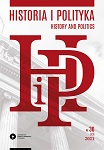Economic and Political Reconstruction and Development of FRG in the Period after World War II
Economic and Political Reconstruction and Development of FRG in the Period after World War II
Author(s): Mariusz JanikSubject(s): Agriculture, Economic history, Political history, Economic development, WW II and following years (1940 - 1949), Post-War period (1950 - 1989)
Published by: Wydawnictwo Naukowe Uniwersytetu Mikołaja Kopernika
Keywords: FRG; occupation zones; “economic miracle”; industry and agriculture; Erhard’s reform; economic growth and development; social market economy; Marshall Plan; economic fluctuations;
Summary/Abstract: In the first post-war years, the policy of the Western occupying powers towards Germany was aimed at preventing the economic revival of their former formidable competitor. As a result of these efforts, West Germany rebuilt its economy to the pre-war level later than Great Britain or France. The undoubted shift in the economic development of West Germany began in mid-1948. The impetus for the rapid growth of industrial production was the monetary reform carried out by the Western occupying powers, as well as the inflow of funds under the Marshall Plan. The monetary reform carried out in June 1948 favoured the strengthening of the financial market and was an incentive to invest. The influx of capital under the Marshall Plan had a similar impact on the West Germany’s economy during this period. The western zones of Germany played a special role in this plan. The United States, striving to strengthen its position in these zones as much as possible and use them as a strategic base (aimed, inter alia, against the communist bloc), provided West Germany with a sum of loans and subsidies significantly exceeding the amount of aid provided to other Western European countries. An extremely serious burden for the Western occupation zones was the influx of refugees from neighbouring areas (a total of about 10 million people) and the need to maintain the occupation troops, which directly led to a huge deficit in food resources. Agricultural production fell and ranged only from 66% to 75% of the pre-war production level.
Journal: Historia i Polityka
- Issue Year: 43/2021
- Issue No: 36
- Page Range: 139-151
- Page Count: 13
- Language: English

